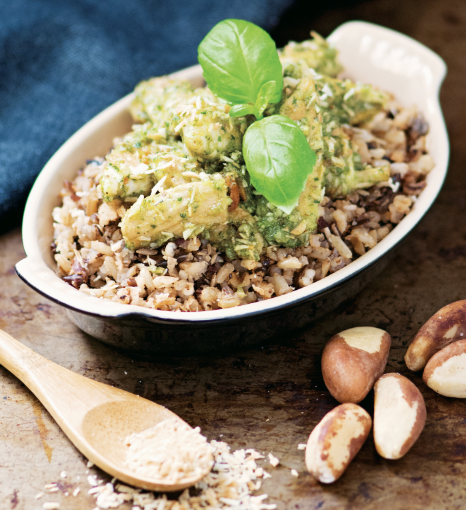You've Probably Been Cooking With The Wrong Oils

Like what you see in the photo? Try this recipe for the best chicken you’ll ever have!
Fortunately, unrefined oils and fats are becoming easier and easier to find. Once you’ve tasted an oil, you’ll know if it’s unrefined or not; an unrefined oil will taste, smell, and look like what it’s made from. Refined oils have no flavor, no aroma and are the same pale golden yellow color. (TV chefs refer to refined oils as “neutral” and recommend that audiences use these “neutral” oils in their daily cooking. Aside from the health implications of using refined oils, it’s worth noting that trans fat is a highly refined oil—why would you want to use a flavorless ingredient?)
Unrefined walnut oil is amazingly rich and buttery; extra-virgin olive oil varies greatly from bottle to bottle, just as olives vary greatly in flavor; unrefined coconut oil has a mildly sweet, coconut flavor. You’ll easily be able to taste the differences between refined and unrefined oils.
Of course, you can’t open bottles in stores and taste oils before buying them. But you can look for a few clues:
- High-quality oils are often packaged in opaque glass bottles to protect them from damaging light.
- Look for the word “unrefined”; in the case of olive oil, look for “extra-virgin.”
- High-quality oils are often stamped with expiration dates. Some also indicate the level of heat they can handle (i.e., extra-virgin olive oil is good up to 325F).
- Avoid any oils that are stored next to sources of heat or light.
- Buy oils from stores with high turnover. Stores that stock walnut and seed oils often display them in refrigerated cases to prolong the freshness of these fragile oils.
And that’s your quick cheat sheet! You’ll find more information—plus more 80 recipes featuring unrefined oils and fats—in the pages of The Big Book of Healthy Cooking Oils.
Related:
